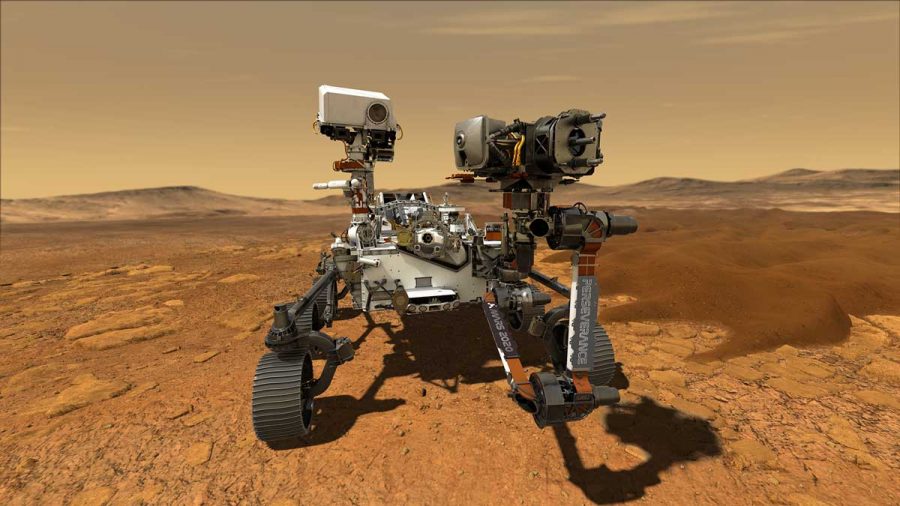A Small Step for Perseverance, a Giant Leap for Mankind: Mars Rover Gathers First Audio Recording
NASA
On Feb.18, 2021, NASA’s Perseverance accomplished a massive featーit captured the first audio recording on Mars.
March 31, 2021
On July 30th, 2020, National Aeronautics and Space Administration launched the Mars Perseverance Rover, with its main task being to find signs of ancient microbial life and collect samples of rock to further analyze on Earth. The goal of the mission was to use concepts from astrobiology and explore the past habitability of Mars to uncover and analyze details that could aid future human-led Mars explorations.
“This video of Perseverance’s descent is the closest you can get to landing on Mars without putting on a pressure suit,” NASA associate administrator for science Thomas Zurbuchen said. “It should become mandatory viewing for young women and men who not only want to explore other worlds and build the spacecraft that will take them there, but also want to be part of the diverse teams achieving all the audacious goals in our future.”
Having landed on Thursday, Feb.18, Perseverance has already accomplished major milestones including successfully parachuting toward the surface of Mars and capturing the first audio recording from Mars using an external microphone.
“For those who wonder how you land on Mars – or why it is so difficult – or how cool it would be to do so – you need look no further,” said NASA Administrator Steve Jurczyk. “Perseverance is just getting started, and already has provided some of the most iconic visuals in space exploration history. It reinforces the remarkable level of engineering and precision that is required to build and fly a vehicle to the Red Planet.”
Scientists working with NASA’s Mars 2020 rover have discovered that one of the best places to look for signs of ancient life is the Jezero Crater, which is the site where the rover landed. The high-definition cameras attached to the rover captured the entirety of the descent process, showing some of the chaotic moments during its journey down to the Jezero Crater. The footage from the cameras aboard the spacecraft starts 7 miles above the surface, showing the deployment of a massive parachute traveling faster than the speed of sound, and ends with the rover’s landing in the crater.
Unfortunately, the microphone attached to the rover was not able to collect usable data, but the commercial off-the-shelf device survived the extreme descent to the surface and obtained sounds from Jezero Crater on Saturday, Feb. 20. About 10 seconds into the 60-second recording, a Martian breeze is audible for a few seconds, as are mechanical sounds of the rover operating on the surface.
“Just imagine yourself sitting on the surface of Mars and listening to the surroundings,” said Dave Gruel, NASA’s lead engineer for Perseverance’s camera and microphone systems during a Monday press conference. “Here 10 seconds in was an actual wind gust on the surface of Mars, picked up by the microphone and sent back to us here on Earth.”
This incredible accomplishment has provided scientists with a source of useful information that they can continue to use in the years to come. NASA engineers and scientists will be able to take further steps in space exploration and these findings will propel humanity to new discoveries on Mars.



